The Beluga whale is often thought to have qualities that we don’t normally associate with whales: it is said to be graceful, lithe, and communicative features such as a smile. It might have been these qualities that Airbus wanted to have in its gigantic cargo airliner that it gave the name “Airbus Beluga” to its freighter.
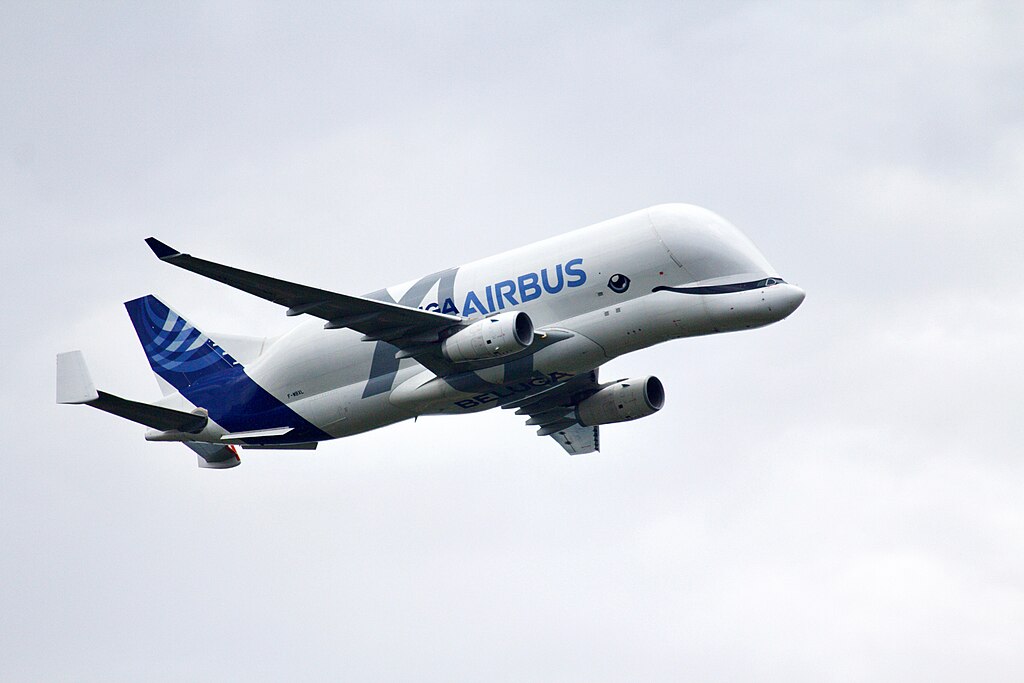
photo: Rémi Guillot/Wikimedia commons
Airbus Beluga aka Airbus A300-600ST is a derivative of the versatile Airbus A300-600 widebody aircraft with a large cargo hold on top. The aircraft has a 44.5-meter wingspan. It is a medium-haul freight aircraft that can carry a load of 47,000kg over 900 nautical miles. Before diving deep into the details of the Airbus Belugaa, let’s explore interesting facts about it that might not ring with a tone of familiarity with everyone :
- The aircraft’s large cargo door at the front of the fuselage opens upwards to facilitate easy loading and unloading of oversized cargo items. This feature facilitates quick turnaround times and minimization of ground handling delays.
- Airbus operates a fleet of five Beluga aircraft, regularly transporting components between production sites in France, Germany, Spain, and the United Kingdom.
- The Beluga XL, an upgraded version of the original Beluga, was introduced in 2014. It has an even larger cargo capacity and can simultaneously transport two A350 XWB wings.
- The legendary Beluga plane can carry oversized cargo like helicopters, chemical tanks, large painting canvases, relief supplies, and parts of space vehicles.

photo: Bernardo Fernandez copado/Wikimedia common
Background of Airbus Beluga
The inception of Airbus Beluga took place as far back as the 1990s. The European aviation giant, Airbus, needed to address Airbus’s requirement for an efficient and dependable means of transporting sizable aircraft components between their production facilities throughout Europe.
Conventional transportation methods, including road and sea transport, were expensive and time-consuming. Airbus aimed to create a specialized aircraft capable of carrying fully assembled wings and fuselage sections, reducing the assembly process’s duration and complexity.
In September 1992, Airbus started constructing what would eventually materialize as Airbus A300-600ST. The one-of-a-kind BegulaST hit the skies rolling on September 13, 1994. This whale-shaped aircraft was commissioned in 1995 and received European Aviation Safety Agency (EASA) certification in October of the same year and took to the skies at the start of the following year.
The Beluga plane was not merely an identical substitute to the Airbus A300-600; but a more extensive, faster, more efficient, and could accommodate twice as much Cargo by weight- thus proving it to be excellent for Airbus’ ferrying needs.
The European Aerospace company, Airbus, has separate decentralized production facilities and final assembly plants. The UK-based Airbus subsidiaries make the wings and nose gear, whereas German partners build the fuselage, and the aircraft tail and doors are made in Spain. On the other hand, the nose and center section is manufactured in France. Though its components are produced in various places, the Airbus is finally assembled in Toulouse or Hamburg.
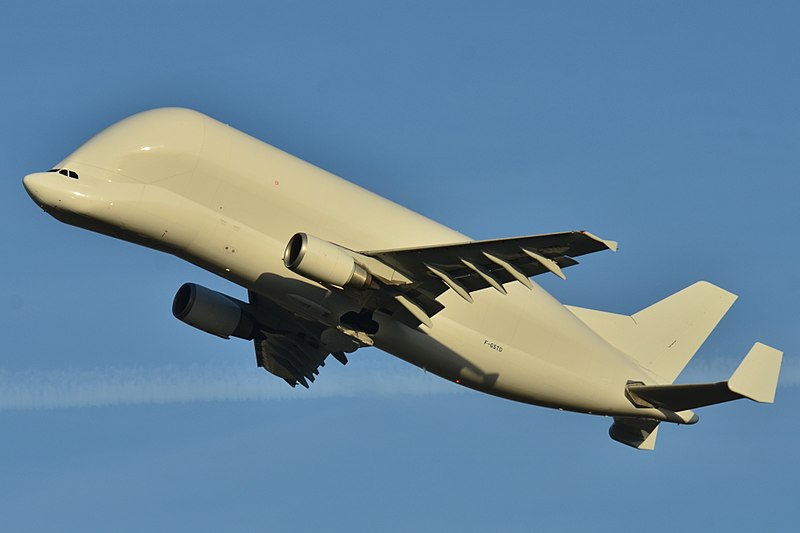
Side view of Beluga F-GSTD
Capabilities of whale-shaped Airbus Beluga
Each of the two GE CF6-80C2 turbofan engines of Beluga produces 257kN of thrust. It can whizz past Mach 0.7, and that too as far as 2,770 km with a 40-ton payload. The fuel range inches upwards of 4,632km (2,501nmi) when this payload is dropped by 14 tons. The A330-600 ST’s quirky whale-shaped hull presents one of the most voluminous cargo holds of any in-service civil or military airliner.
This enormous cargo aircraft, which takes care of customers’ outsized freight transportation needs in sectors not limited to aeronautics, space, and military, is also used in benevolent causes like transportation of humanitarian aid and medical supplies.
Airbus A300-600ST did, at a point in time, hold the world record for carrying the most voluminous payload. The design of the Beluga facilitates palletized freight i.e., it allows the packaging of goods into small pallets while preparing for shipping. Beluga also has a semi-automated main deck cargo loading system that makes way for swift handling of its payload. whilst also minimizing manpower and cutting down on the unloading/loading time.
Any cargo with dimensions up to 7.1 meters in width and 6.7m in height can fit in the 56.15 m-long Airbus Beluga. Although a bulk of the work of Beluga is dedicated towards Airbus’ production sites, Beluga’s cargo transport solutions also come in handy for other industries. Beluga would not be anyone’s pick for transporting large animals but its temperature-controlled conditions- which are facilitated by its heating module- come in handy while dealing with sensitive payloads like satellites and paintings.

Front view a Beluga during its flight
How many Beluga planes are there?
Though the BegulaST aircraft provided excellent services for close to two decades, a staggering growth in scientific technology meant that Airbus’ industrial airlift requirements couldn’t be met as swiftly and as efficiently as Airbus would have liked. This is the biggest reason why these birds are being phased out. This paved the way for the original BelugaST to be replaced by a super-transporter by the name of BelugaXL
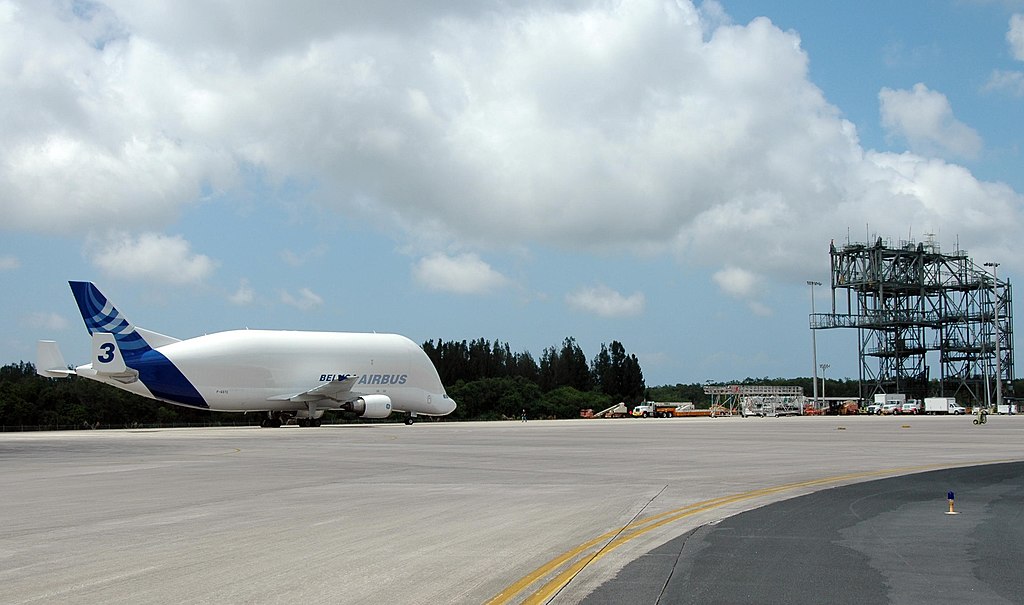
photo: NASA/Jim Grossmann / Wikimedia commons
In the septennium spanning from 1992 through to 1999, Airbus developed five Airbus BelugaaST aircraft. The first of these was retired in 2021 while four of the rest are still active. The Beluga has undergone several infrastructure changes to offer novel approaches to transporting oversized Cargo. As a result, the remaining 4 BelugaSTs will be replaced by BelugaXL variants, which will have a carrying capacity of 111,333 lb (50,500 kg) and a volume of 78,000 cu ft. All in all, Airbus has constructed 11 Beluga aircraft, comprising 5 BelugaST and 6 BelugaXL models. The last of the Beluga planes was rolled out in Toulouse, France in 2023.
Airbus BelugaXL
Beluga XL’s maiden flight took place in July 2018. It entered service with Airbus’ logistics division Airbus Transport International (ATI) in February 2021.

The XL version of the Beluga (A330-743L) is a derivative of the Airbus A330 widebody airliner which was launched in November 2014. Its rather enlarged fuselage allows for a carrying capacity of 51 metric tons. This extra-large version of the Belugaa is powered by Rolls-Royce Trent 700 engines and has a range of 4,000 kilometers, alongside a wingspan of 60 meters.
Differences between Airbus BelugaST vs Airbus BelugaXL
Engines:

While the Airbus Beluga was inspired by the Airbus A300-600, the Airbus Beluga XL drew its inspiration from the Airbus A330-743L. These two statuesque figures in cargo are powered by 2 GE CFE-80C2A8 turbofans and Rolls Royce Trent 700 turbofans, respectively.
Size and Capacity
Even the cargo of the Beluga ST, which has a capacity of 47 tons and can accommodate a payload volume of 1,400 cubic meters, draws its roots from the Airbus A300-600. On the other hand, the Beluga XL has a capacity of 51 tons and a payload volume of 2,250 cubic meters, which is 30% higher than the Beluga ST. The XL variant’s cargo is deeply tied to the model of the Airbus A330-200.
| Characteristics | Airbus Beluga ST | Airbus Belga XL |
| Inspired by | Airbus A300-600 | Airbus A330-743L |
| Payload Volume | 1,400 cubic meters | 2,250 cubic meters |
| Maximum Capacity | 47 tons | 51 tons |
| Operational Range | 2,800 kilometers (1,700 miles) | 4000 km (2485 miles) |
Fuselage Modification:
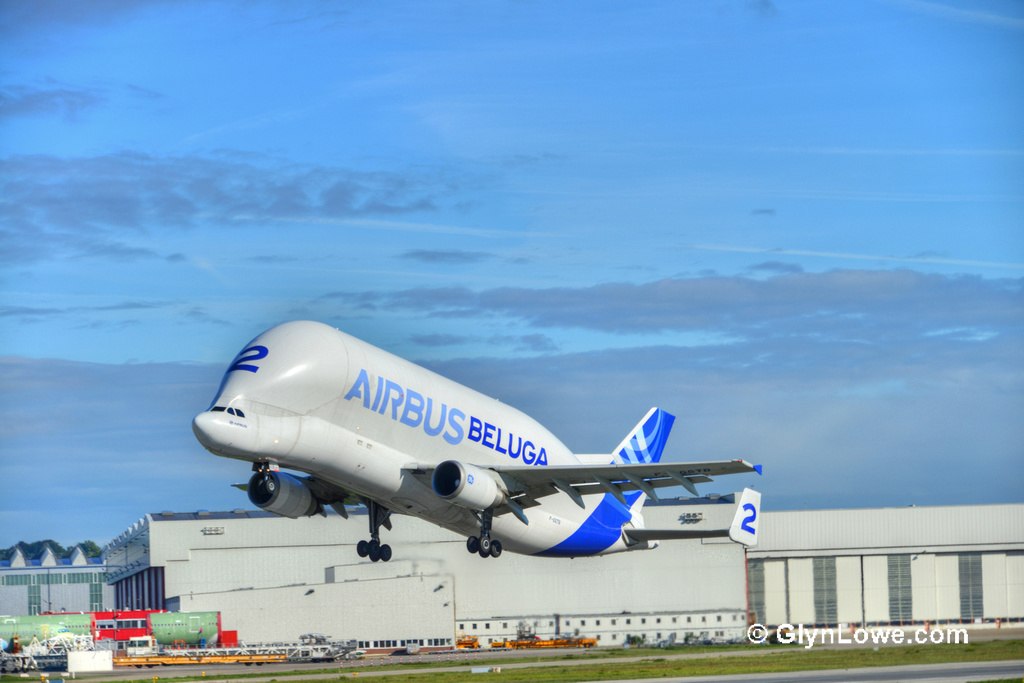
photo: www.GlynLowe.com/wikimedia commons
The original fuselage design of the Airbus A300-600 trickles down to Airbus Beluga ST with minimal modifications, thereby ensuring that it can house a voluminous Cargo whilst keeping the overarching frame of the original aircraft intact. The Beluga XL, on the other hand, has several tweaks to its fuselage, with the upper section resembling the shape of a whale it is named after. This, in turn, makes the XL commodious enough for a larger cargo hold and allows the delivery of oversized components.
Operational Range:
In addition to an operational range of approximately 2,800 kilometers (1,700 miles) even when the payload is full, the ST can cover medium distances without refueling. The Beluga XL’s operational range is 1200 kilometers more than that of the ST. It also trumps the ST in terms of the distance it can travel without refueling.
Airbus BelugaST vs Aero Space lines Super Guppy
BelugaST:
The distinctive designs such as the upward-opening tail section facilitating greater cargo loading/ unloading, the mimicking of its whale-ish smile, and everything that goes into the BelugaST were manufactured by Airbus, The Airbus Beluga ST was designed keeping in mind the need for transportation of large aircraft components between the production facilities of Airbus.
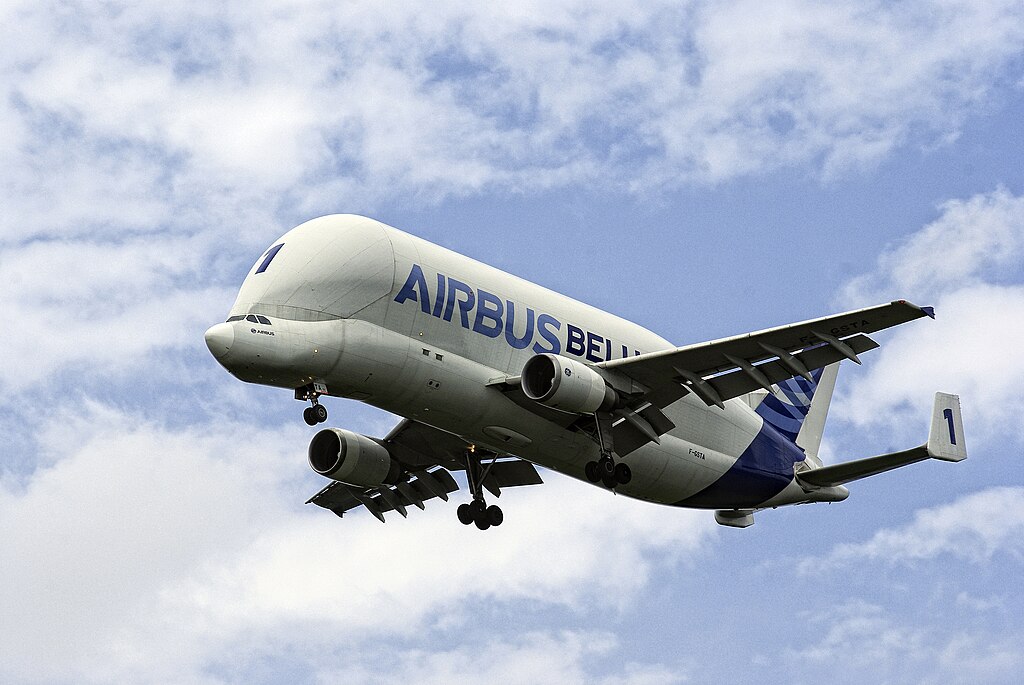
Super Guppy:
The Super Guppy, which has a variant called the Super Guppy Turbine (SGT), was developed by an American aerospace company called Aero Spacelines. Its purpose was similar to that of the Beluga ST– the delivery of oversized Cargo that included modules for the aerospace industry. The Super Guppy comes with an open-able unique hinged nose. This, in addition to giving it the appearance of a “guppy” fish, allows Cargo to be loaded directly into its voluminous compartment.
| Characteristics | Beluga ST | Super Guppy |
| Cargo capacity | 1,400 cubic meters (49,000 cubic feet) | 1,770 cubic meters (62,500 cubic feet) |
| Maximum payload | 47 metric tons (103,600 pounds) | 26 metric tons (56,800 pounds) |
| Operated by | Airbus Transport International (ATI) | National Aeronautics and Space Administration (NASA) |
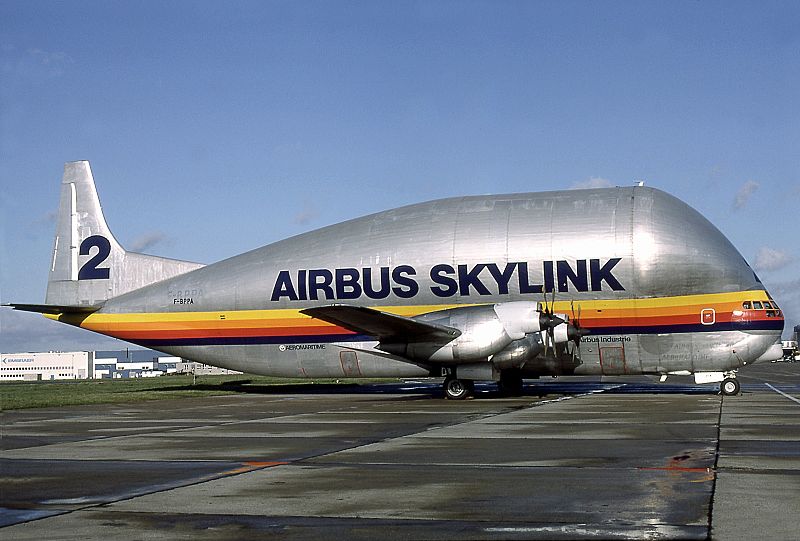
Airbus Skylink Super Guppy in 1984
Does the Airbus Beluga still fly?
The leviathan Airbus Beluga still commutes to and from Airbus manufacturing centers as well as assembly plants across Europe. This facilitates the transportation of significant pieces of its aircraft for final assembly. They are also sporadically used by other businesses to transport sizable items for clients. Recently, Airbus sent out one of its Beluga aircraft to transport the Center. Last year, Beluga carried an I6F2 telecom satellite for a British telecommunications company called Inmarsat. In doing so, it headed out from Toulouse to Florida’s Kennedy Space with a satellite with a stop at St. John’s International Airport for refueling.
The Airbus Beluga XLs were expected to take to the skies at the end of 2023. Airbus has already obtained an Air Operator Certificate (AOC) for its Beluga cargo carriers. It submitted its application for the AOC in June 2023 and it acquired the Continuous Airworthiness and Maintenance Organisation certificate in November 2023.

Conclusion
A cute, memorable design, a sizable cargo hold, and more than efficient loading capabilities have made the Beluga a pivot in transporting bulky components across the various production facilities of Airbus. When Airbus introduced the BelugaXL, the ceiling of Beluga’s capacity and range grew. Though only 5 of the ST versions remain, the acquisition of the Air Operator as well as Continuous Airworthiness and Maintenance Organisation certificate, are set to take the XL versions to the skies.
